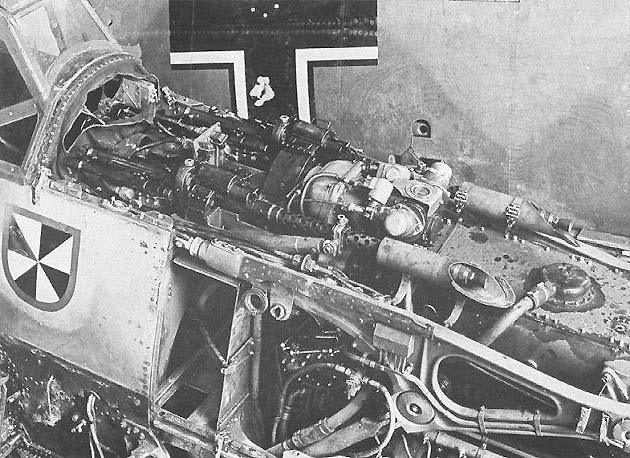| "B"• 7.92mm Rheinmetall MG 17
- Developed in 1936, the MG 17 was suitable for synchronized cowl mounting to shoot through the
aircraft's own propellor. Air-cooled, recoil-operated and belt fed it used the standard Mauser 7.92mm
cartridge. Used in fighter aircraft such as the Messerschmitt Bf 109-E.
"C" • 13mm MG 131
- By 1942 the 7.9mm light machine gun was considered obsolete as an aircraft weapon and was replaced by the MG 131.
The 13mm MG 131 bullet is about three times heavier than that of the 7.92mm, but can be fired at a similar muzzle velocity.
Hence the projectile retained comparable ballistic characteristics with only a minor reduction in the rate of fire. A light weapon, with electrical
firing which simplified synchronization, it was small enough to place in the same cowl mounted position as the MG17. It continued to
be used until the end of the war.
"E" • 20mm Oerlikon MG FF
- Developed using the Swiss Oerlikon F as a basis, the MG FF saw widespread use in many German aircraft during the early air war in WWII, most notably in aircraft such as the
Messerschmitt Bf109-E and Bf110-B. Although superseded soon after the end of 1940, it provided the Luftwaffe with a formidable punch against the British, who
had yet to adopt aircraft weapons beyond the .30 caliber class.
The main drawback of the MG FF was its ballistic performance. Being very different from the 7.92mm MG 17 light machine guns
installed on the same aircraft, the cumulative effect of concentrated fire was lost. (One of the drawbacks to non homogeneous armament.) With the
development of the “Mine” shell design, this disparity was reduced somewhat.
"D" • 15mm Mauser MG 151/15
- Although having high muzzle velocity, the MG 151/15 's size, low rate of fire and weight made it an impractical upgrade from the existing 13mm MG 131.
However, it did provide a short term improvement over the existing 20mm MG FF cannon and was used in the Bf109-F fighter.
The MG 151 was soon enlarged to 20mm caliber and quickly replaced the 15mm design.
"F" • 20mm Mauser MG151/20
- The excellent replacement to the MG FF and became the primary aircraft weapon for the Luftwaffe from about 1942 to 1944,
but since the Bf 109F carried only a single cannon, it proved insufficient to effectively counter the heavy bomber threat, forcing designers to progress to 30mm types, as well
as continue with more advanced aircraft designs like the FW 190 which could carry more guns.
"G" • MK 108
- Although having a lower ballistic performance, it was relatively light and compact. Fighters could carry two or even four MK 108s.
This gun had a heavy punch and was an effective weapon to use against bombers such as the B-17. It saw late war service with aircraft
types such as the Bf 109-G, Bf 110-G, FW 190, Me 163 rocket fighter and the Me 262 jet fighter.
"H" • MK101 / MK103
- Initially developed to attack bombers from a safe distance, the MK 101's weight and low rate of fire relegated its use by ground attack aircraft, such as the Me 410 Hornisse,
and Henschel Hs 129. These mounted the guns in special pods or bomb bay arrangements.
The MK103 was lighter than the MK101, with electric firing and a faster
rare of fire. It was an excellent powerful weapon, but still too heavy to
be carried by a fighter without considerable loss of performance. Consideration was given,
the very end of the war, to mount a modified MK 103 in the Bf 109-K Messerschmitt but was never implemented.
The Me 262-A Schwalbe jet fighter was evaluated using the 103 on a very limited basis.

A Last Gasp - The 50mm SG 500 Jägerfaust! 
|


